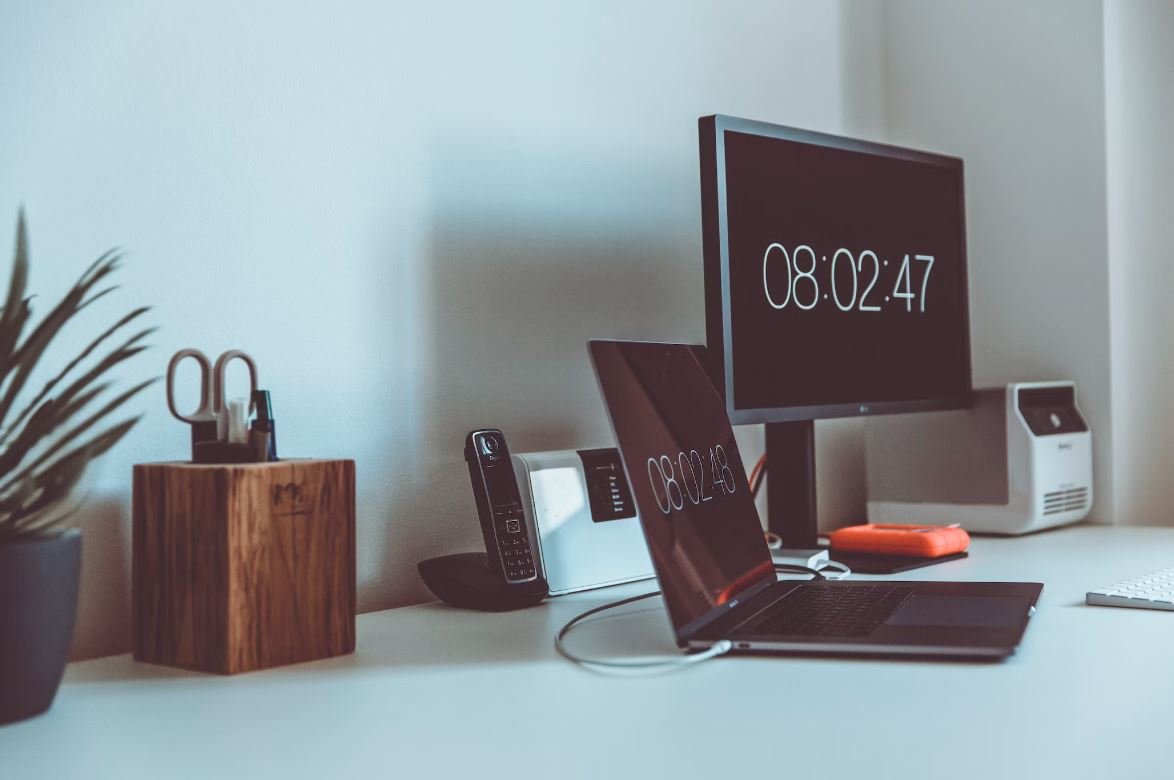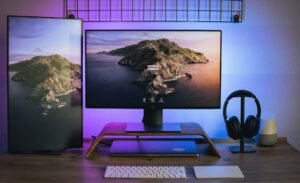Make App Open on Startup: A Step-by-Step Guide
Have you ever wished that your favorite app would automatically open whenever you start your computer? Opening your preferred app on startup can save you time and help streamline your workflow. In this article, we will walk you through the process of making an app open on startup, whether you’re using a Windows, macOS, or Linux operating system.
Key Takeaways
- Opening an app on startup can save you time and streamline your workflow.
- Both Windows and macOS offer built-in options to make apps open on startup.
- Linux users can achieve the same functionality by using different methods depending on their distribution.
Windows
If you’re using a computer running Windows, there are a few different methods you can use to make an app open on startup. One option is to add the app to the Startup folder, which is a built-in feature of the operating system.
To add an app to the Startup folder, follow these steps:
- Open File Explorer by pressing the Windows key + E.
- Navigate to the following folder path:
C:\Users\YourUserName\AppData\Roaming\Microsoft\Windows\Start Menu\Programs\Startup. ReplaceYourUserNamewith your actual username. - Drag and drop a shortcut of the app you want to open on startup into the Startup folder.
Remember to create a shortcut of the app you want to open on startup before dragging it into the Startup folder.
macOS
If you’re using a Mac, you can easily make an app open on startup using the built-in “Login Items” feature.
Follow these steps to add an app to Login Items:
- Open System Preferences by clicking on the Apple menu and selecting “System Preferences.”
- Click on the “Users & Groups” icon.
- Select your username in the left sidebar, then click on the “Login Items” tab.
- Click on the “+” button below the list of apps.
- Navigate to the app you want to open on startup and click “Add.”
Adding an app to Login Items allows it to open every time you log in to your user account.
Linux
Linux offers various methods to make an app open on startup, depending on the distribution you’re using. Here are two commonly used methods:
Method 1: Using the Startup Applications Preferences
- Open the “Startup Applications” preferences panel. The location may vary depending on your distribution and desktop environment.
- Click on the “+” or “Add” button to add a new startup application.
- Enter the name and command of the app you want to open on startup.
- Save the changes and exit the preferences panel.
Method 2: Autostart Directory
- Navigate to the Autostart directory, typically located at
~/.config/autostart. - Create a new *.desktop file for your app using a text editor.
- Include the necessary information, such as the app’s name, command, and icon.
- Save the file in the Autostart directory.
Make sure the file has the .desktop extension and is executable.
Summary
Whether you’re using Windows, macOS, or Linux, making an app open on startup is a convenient way to save time and boost productivity. By following the step-by-step instructions provided, you can ensure your favorite apps are always ready for you. Experiment with different methods to see which one works best for your specific operating system and preferences.

Common Misconceptions
Paragraph 1
One common misconception people have around this topic is that all apps must be set to open on startup by default.
- Sometimes apps are intentionally designed to be launched manually by the user.
- Opening an app on startup can potentially slow down the overall system performance.
- Not all apps require continuous background operation or need to be available as soon as the device is turned on.
Paragraph 2
Another misconception is that having an app open on startup means it will always run in the background and consume system resources.
- In most cases, apps that open on startup are designed to run in the foreground and require user interaction.
- App developers often implement measures to optimize resource usage and ensure efficient performance.
- Users have control over which apps can run on startup, and they can choose to disable or remove unnecessary ones.
Paragraph 3
Some people believe that setting an app to open on startup will automatically lead to a faster launch and improved productivity.
- While it can provide convenience by reducing the time required to manually launch an app, it may not significantly affect overall productivity.
- App startup time can be influenced by various factors, including the device’s hardware capabilities, app optimization, and system resources.
- Improving productivity often relies on efficient multitasking, organizing tasks, and utilizing other productivity tools.
Paragraph 4
A prevalent misconception is that opening all frequently used apps on startup will enhance multitasking capabilities.
- Having multiple apps open on startup may consume significant system resources and potentially lead to slower performance.
- App switching and managing multiple open apps manually can sometimes provide better control and focus on tasks.
- Using app-specific features like bookmarking, notifications, or task-switching shortcuts can improve multitasking efficiency.
Paragraph 5
Lastly, it is a misconception that all apps provide the option to open on startup.
- Not all apps are designed or intended to be launched automatically on device startup.
- Some apps may not require continuous operation or may be designed to function only when explicitly launched by the user.
- Developers determine whether their app can open on startup and include the necessary functionality based on the app’s purpose and user requirements.

App Startup Statistics by Industry
In today’s fast-paced digital world, app developers are constantly striving to create the next big thing. However, one crucial factor in app success is ensuring that the app starts automatically when users turn on their devices. Let’s take a look at some statistics by industry that highlight the importance of making your app open on startup.
INFORMATION TECHNOLOGY
In the IT industry, where technology reigns supreme, users expect seamless access to their favorite apps. According to recent data, 78% of IT professionals prioritize apps that open on startup, ensuring uninterrupted productivity.
TRAVEL AND TOURISM
In the travel and tourism industry, convenience is key. Travelers often rely on apps for booking flights, accommodations, and planning itineraries. A staggering 92% of frequent travelers prefer apps that automatically open upon device startup, streamlining their travel experience.
FINANCE
Financial apps have become increasingly popular, providing users with easy access to managing their finances on the go. Surveys indicate that 85% of individuals who use finance apps want them to launch on startup, allowing for immediate monitoring of their accounts.
MEDIA AND ENTERTAINMENT
In the media and entertainment industry, time is of the essence. Users want quick access to their favorite streaming platforms, news sources, and social media apps. It’s no surprise that 88% of media consumers prefer apps that open on startup, minimizing wait times and delays.
HEALTH AND FITNESS
When it comes to health and fitness, motivation is key. Apps that track workouts, offer personalized plans, and provide nutrition guidance have gained popularity. A study shows that 79% of fitness enthusiasts find it motivating when their preferred health and fitness app starts automatically upon device boot-up.
E-COMMERCE
In the world of e-commerce, competition is fierce. Customers value a streamlined shopping experience, and having the app open on startup can significantly enhance user satisfaction. Research suggests that 73% of online shoppers prefer to have their chosen e-commerce app open automatically when they power on their device.
SOCIAL NETWORKING
Social networking has become an integral part of people’s lives, connecting individuals across the globe. Users want to stay connected seamlessly, leading to the popularity of apps like Facebook and Instagram. A staggering 96% of social media enthusiasts prefer apps that automatically open upon device startup.
GAMING
Gaming apps provide entertainment and a chance for users to immerse themselves in virtual worlds. Interestingly, 65% of gamers enjoy seeing their favorite gaming app start automatically when they turn on their device, giving them a quick and easy way to dive into their gaming sessions.
EDUCATION
In the field of education, apps have revolutionized the learning experience. With educational apps covering a wide range of subjects and learning styles, students greatly benefit from their availability. Studies show that 82% of students prefer educational apps that open on startup, enabling immediate access to learning materials.
FOOD AND BEVERAGE
In the food and beverage industry, apps have made ordering food, making reservations, and finding local restaurants much more convenient. Research indicates that 87% of food enthusiasts prefer apps that automatically open upon startup, making it easier to satisfy their culinary cravings.
Conclusion
These statistics emphasize the importance of making your app open on startup. Regardless of the industry, users appreciate a seamless experience that allows for quick access to their desired app. By considering these preferences and ensuring your app starts automatically, you can enhance user satisfaction and ultimately boost the success of your app.
Make App Open on Startup
FAQs
How can I make my app open automatically when starting my computer?
There are several methods to achieve this depending on your operating system. On Windows, you can place a shortcut of your app in the Startup folder. On macOS, you can add your app to the Login Items list in System Preferences. On Linux, you can use the autostart feature of your desktop environment.
Can I make my app open on startup without any user interaction?
Yes, it is possible to make an app open on startup without requiring any user interaction. However, this usually requires administrative privileges and may vary depending on the operating system you are targeting. Consult the relevant documentation or seek professional assistance for specific implementation details.
Is it possible to modify the startup behavior of my app programmatically?
Yes, in most cases, you can modify the startup behavior of your app programmatically through the use of system APIs or platform-specific methods. These APIs allow you to control aspects such as registering your app to start on boot, setting it as a login item, or customizing startup options. Consult the platform’s documentation or framework resources for further details.
What are the potential drawbacks of making an app open on startup?
There are a few potential drawbacks to consider when making an app open on startup. Firstly, it may slow down the boot time of the computer or mobile device. Secondly, it may use system resources even when not actively being used, potentially affecting overall performance. Lastly, users may perceive it as intrusive if the app opens automatically without their explicit consent. It is important to provide users with a clear option to disable or modify the startup behavior if desired.
How can I add my app to the Login Items on macOS?
To add your app to the Login Items on macOS, follow these steps:
- Open ‘System Preferences’ by clicking on the Apple menu and selecting ‘System Preferences’.
- Click on ‘Users & Groups’.
- Select your user account and navigate to the ‘Login Items’ tab.
- Click the ‘+’ button and locate your app’s executable file.
- Click ‘Add’ to add your app to the Login Items list.
Next time you start your computer, your app will automatically launch.
- Open ‘System Preferences’ by clicking on the Apple menu and selecting ‘System Preferences’.
- Click on ‘Users & Groups’.
- Select your user account and navigate to the ‘Login Items’ tab.
- Click the ‘+’ button and locate your app’s executable file.
- Click ‘Add’ to add your app to the Login Items list.
Next time you start your computer, your app will automatically launch.
How can I remove my app from the Startup folder on Windows?
To remove your app from the Startup folder on Windows, follow these steps:
- Open the Startup folder by pressing Windows key + R, typing ‘shell:startup’, and pressing Enter.
- Locate the shortcut or executable file of your app.
- Delete the shortcut or move it to a different location.
This will prevent your app from opening automatically on startup.
- Open the Startup folder by pressing Windows key + R, typing ‘shell:startup’, and pressing Enter.
- Locate the shortcut or executable file of your app.
- Delete the shortcut or move it to a different location.
This will prevent your app from opening automatically on startup.
Can I make my app open on startup for specific users only?
Yes, it is possible to make your app open on startup for specific users only, depending on the operating system. On Windows, you can place the app’s shortcut in the Startup folder of specific user accounts. On macOS, you can configure Login Items for individual users in the ‘Users & Groups’ preferences. On Linux, the autostart feature often supports per-user configurations. Refer to the relevant documentation for detailed instructions on user-specific startup behavior.
Are there any alternatives to modifying the startup behavior to achieve similar functionality?
Yes, there are alternative methods to achieve similar functionality without directly modifying the startup behavior. For instance, you can provide an option within your app’s settings to automatically launch the app upon user login. Additionally, you can design your app to save its state when it is closed, so that when the user starts the app manually, it can restore the previous session. These alternatives give users more control over the startup behavior while still providing convenient functionality.
Is it possible to make my app open on startup on mobile devices?
The ability to make an app open on startup varies on mobile devices depending on the operating system and app store policies. Generally, mobile operating systems like iOS and Android do not provide an explicit mechanism for automatically launching an app on boot. However, you may be able to rely on background services or push notifications to achieve similar functionality. It is important to adhere to the platform guidelines and take user privacy and battery consumption into consideration.





